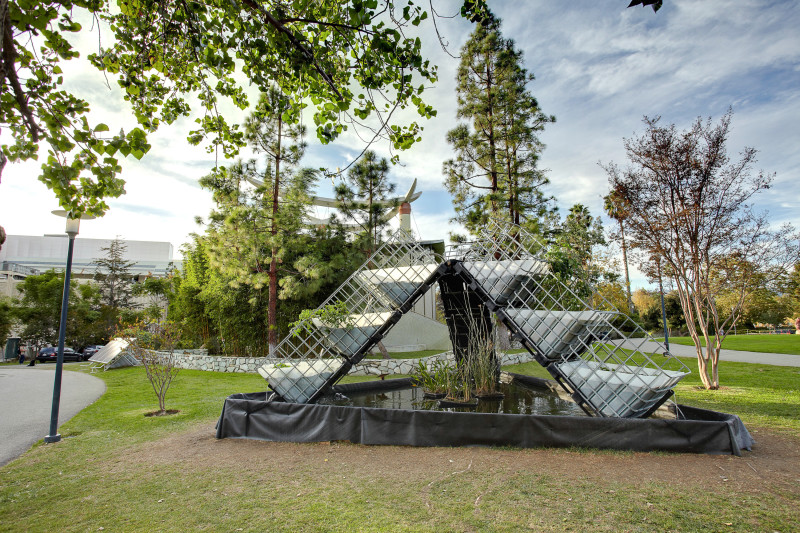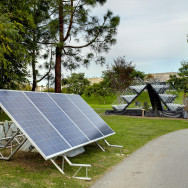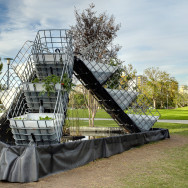Food Pyramid for LACMA, Los Angeles CA 2010
Taking cues from its symbolic predecessor and the material and natural ecologies of Los Angeles, Food Pyramid is a vertical development of the Fish Taco Garden prototyped last summer at Materials & Application’s outdoor exhibition space. Utilizing repurposed and recycled materials that evoke our current industrialized food production and distribution systems, the structure is constructed of stacked Intermediate Bulk Container (IBC) Totes. Typically, the totes are used for commercial transport of potable liquids. The artists transformed these to support a system where food production occurs in an ever-renewing cycle that uses the waste generated by one area of the Food Pyramid to feed the other parts. Due to the low rate of evaporation, the 2,100 gallon system is ideal for the low-rainfall climate of Southern California, and is maintained by a small weekly addition of fresh water. Aside from the 100-watt pump powered by solar panels provided by Nick Vida to cycle the water, the pyramid operates with minimal power input and no external aid from purifiers or filters. During its development at M&A, the prototype garden was supported by captured rainwater despite the enduring drought in California. The delicate ecology of the pond is maintained by a natural mechanical system comprised of native bog plants, vegetables, igneous rocks, and gravel. The waste from the tilapia nourishes the tomatoes, onions, lettuce and cilantro. It is hoped that this compact model of an operational, low-impact food garden will spark visitors’ curiosity and enliven their imaginations to re-evaluate the now-discredited “food pyramid” that was once taught in U.S Public Schools and influenced the way in which Americans bought and served food for themselves and their families.



